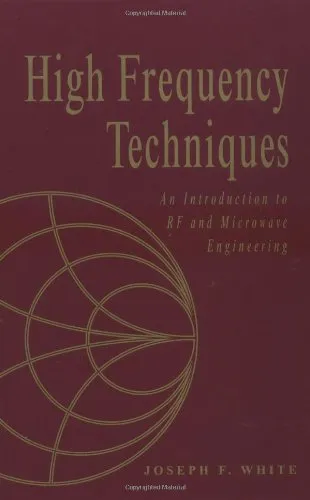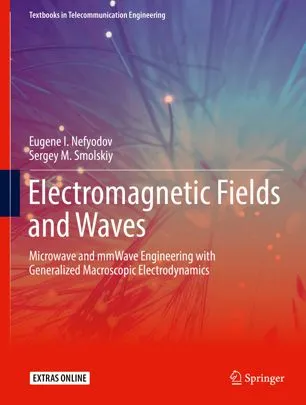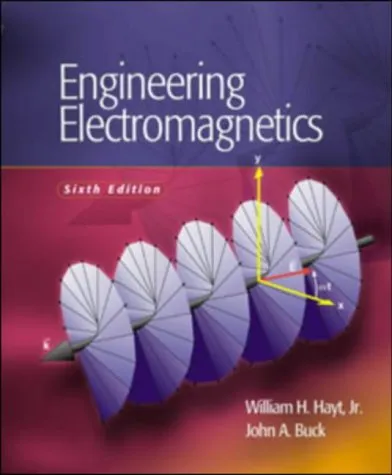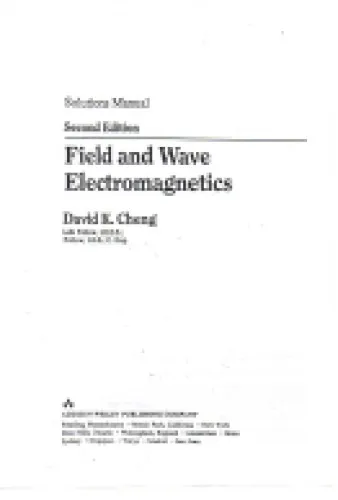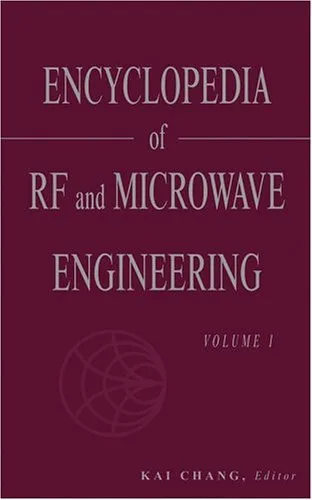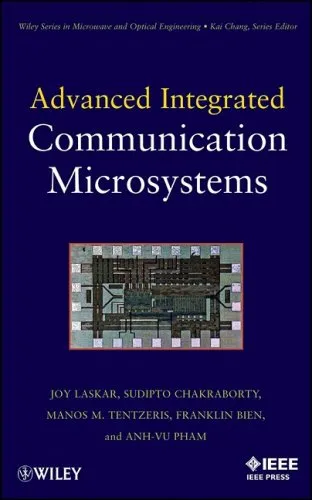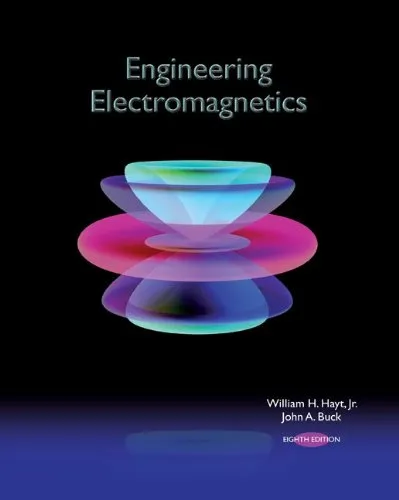High Frequency Techniques: An Introduction to RF and Microwave Engineering
4.6
Reviews from our users

You Can Ask your questions from this book's AI after Login
Each download or ask from book AI costs 2 points. To earn more free points, please visit the Points Guide Page and complete some valuable actions.Related Refrences:
Analytical Summary
The book High Frequency Techniques: An Introduction to RF and Microwave Engineering offers a clear, rigorous, and accessible exploration of the principles, methods, and applications that define the high-frequency spectrum of electrical engineering. Written to bridge the gap between theory and practice, this text guides readers from foundational concepts toward intricate analyses of components, circuits, and systems operating in the RF and microwave domains.
Covering key topics such as transmission lines, impedance matching, waveguides, and practical measurement techniques, the book provides a grounded understanding necessary for both academic inquiry and professional engineering practice. Its structured approach reflects the complexity of high-frequency systems while retaining clarity, making it suitable for graduate-level courses, industry training, and self-study.
Information about the exact publication year is unavailable, as no reliable public source confirms this detail. Nevertheless, the enduring relevance of its topics ensures its position as a valuable resource for contemporary engineers and researchers navigating RF and microwave challenges.
Key Takeaways
Readers will gain not only technical proficiency but also a strategic perspective on how high-frequency design choices impact overall system performance.
From fundamental theoretical derivations to practical guidance, the book delivers actionable insights for modeling, designing, and testing high-frequency circuits and systems. It emphasizes both the physical intuition behind RF phenomena and the mathematical tools necessary to predict and analyze such behavior.
The integration of microwave engineering principles with RF design fundamentals encourages a holistic approach, preparing professionals to address real-world challenges in communication systems, radar, aerospace, and emerging wireless technologies.
Memorable Quotes
“In high-frequency engineering, precision is not optional—it is the foundation of functionality.” Unknown
“Understanding impedance is the gateway to mastering RF design.” Unknown
“Microwave engineering extends the principles of RF into new realms of bandwidth and capability.” Unknown
Why This Book Matters
For engineers, researchers, and advanced students, the significance of High Frequency Techniques: An Introduction to RF and Microwave Engineering lies in its practical depth coupled with strategic breadth.
It addresses the persistent demand for expertise in designing reliable, efficient high-frequency systems—a demand intensified by the proliferation of wireless communication, satellite technology, and advanced radar systems. By connecting theoretical constructs to laboratory practice, the text cultivates an intuitive and analytical mindset vital for innovation in these domains.
Its discussion extends beyond idealized models, tackling losses, non-linearities, and manufacturing considerations, which are crucial to realistic design evaluation. In doing so, the book becomes a roadmap for navigating both fundamental theories and the constraints of real-world applications.
Inspiring Conclusion
In mastering the concepts and techniques presented in High Frequency Techniques: An Introduction to RF and Microwave Engineering, readers stand equipped to navigate the challenges and innovations defining high-frequency technology today.
Whether your goal is to deepen academic research, enhance professional practice, or contribute to cutting-edge advancements in communication and sensing, the principles in this book offer a reliable foundation. Its balanced blend of theory and application creates opportunities to design systems that are not only functional but optimized for performance in the demanding RF and microwave spectrum.
Your next step is clear: engage with the content, apply the concepts to your work, and share insights with peers to foster collective progress in the field of high-frequency engineering.
Free Direct Download
You Can Download this book after Login
Accessing books through legal platforms and public libraries not only supports the rights of authors and publishers but also contributes to the sustainability of reading culture. Before downloading, please take a moment to consider these options.
Find this book on other platforms:
WorldCat helps you find books in libraries worldwide.
See ratings, reviews, and discussions on Goodreads.
Find and buy rare or used books on AbeBooks.
1379
بازدید4.6
امتیاز0
نظر98%
رضایتReviews:
4.6
Based on 0 users review
Questions & Answers
Ask questions about this book or help others by answering
No questions yet. Be the first to ask!
